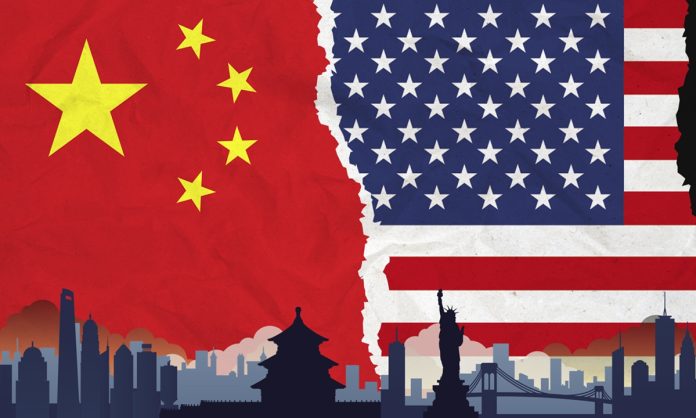In a dramatic escalation of trade tensions between the world’s two largest economies, former U.S. President Donald Trump has proposed an additional 50% tariff on Chinese goods, triggering a swift and unyielding response from Beijing. China has pledged to retaliate “to the end”, describing the move as “economic blackmail” and “a mistake upon a mistake.”
In This Article:
The renewed threat risks plunging global markets into uncertainty and intensifying the long-running trade war that once shook the international economy.
Trump’s Tariff Push: What Sparked the Conflict?
Speaking at a recent campaign rally, Trump doubled down on his long-standing hardline stance against China, asserting that Beijing has been “cheating America for decades.” He emphasized that the 50% tariff is necessary to protect American workers and restore fair trade.
“We’re not going to let China take advantage of us anymore,” Trump said during his remarks. “They’ll pay a price — 50% tariffs on everything they send us.”
According to Trump, the move aims to curb what he calls unfair trade practices, protect American manufacturing, and reduce reliance on Chinese imports.
China’s Strong Rebuttal: “We Will Fight to the End”
Beijing wasted no time issuing a stern response. The Chinese Ministry of Commerce released a strongly worded statement, accusing the U.S. of escalating tensions and jeopardizing global trade stability.
“China will never accept any form of blackmail,” the ministry declared. “If the U.S. persists, China will fight resolutely and to the end.”
Chinese state media echoed similar sentiments, calling the tariff threat “reckless and dangerous,” warning that retaliatory measures are already under consideration.
China’s Possible Countermeasures
China’s retaliatory toolkit includes a wide range of options:
- Imposing reciprocal tariffs on American goods
- Restricting access to rare earth minerals vital to U.S. tech and defense industries
- Targeting U.S. agriculture and automotive sectors
- Increasing scrutiny on U.S. companies operating in China
Additionally, China is reportedly considering filing a formal complaint with the World Trade Organization (WTO) to challenge the legality of the proposed U.S. tariffs.
Global Reaction: Shockwaves Across Financial Markets
The announcement triggered immediate volatility in global stock markets:
- Dow Jones dropped nearly 400 points within hours
- Shanghai Composite Index fell by 2.3%
- Tech stocks particularly bore the brunt amid fears of supply chain disruptions
Investors are bracing for potential long-term impacts, with experts warning of reduced investor confidence, higher prices for consumers, and a slowdown in global economic growth.
Analysts Sound the Alarm: “A Dangerous Game”
Trade analysts across the globe have criticized Trump’s approach, calling it short-sighted and politically motivated. Several experts warn that reviving tariff wars in a post-pandemic world economy could be catastrophic.
“We are looking at a potential full-scale trade war just as the global economy is trying to stabilize,” said economist William Zhang. “This could derail recovery and deepen geopolitical divisions.”
Political Repercussions Ahead of U.S. Elections
The tariff threat is also seen as part of Trump’s broader campaign strategy. With the 2024 U.S. presidential elections behind and political momentum building again in 2025, the former president is looking to consolidate support from blue-collar voters and domestic manufacturing sectors.
However, critics argue that such aggressive trade policies could alienate allies and damage America’s international credibility.
Historical Echoes: Is This 2018 All Over Again?
The situation bears striking similarities to the 2018–2020 U.S.-China trade war, which resulted in:
- Over $550 billion worth of goods affected
- Massive disruptions in global supply chains
- Price hikes on electronics, machinery, and consumer goods
- A tit-for-tat tariff spiral that left both nations economically bruised
What Lies Ahead: A Fragile Path Forward
With tensions escalating rapidly, all eyes are now on whether diplomatic channels can cool the rhetoric. Despite the strong statements, there remains a glimmer of hope for de-escalation through negotiations or third-party intervention via the WTO or G20 forums.
If not resolved, the world may witness another prolonged economic standoff, affecting not just the U.S. and China, but the global economy at large.
Moving Forward: Trade War 2.0 Brewing?
The world stands at a familiar crossroads as the U.S.-China tariff conflict reignites with renewed fury. With strong words and stronger threats flying across the Pacific, the stakes have never been higher. Whether this is posturing or the beginning of Trade War 2.0, one thing is certain — the economic consequences will be global and far-reaching.
As China vows to “fight to the end” and Trump remains defiant, the need for calm, strategic diplomacy becomes more urgent than ever.
By – Nikita




